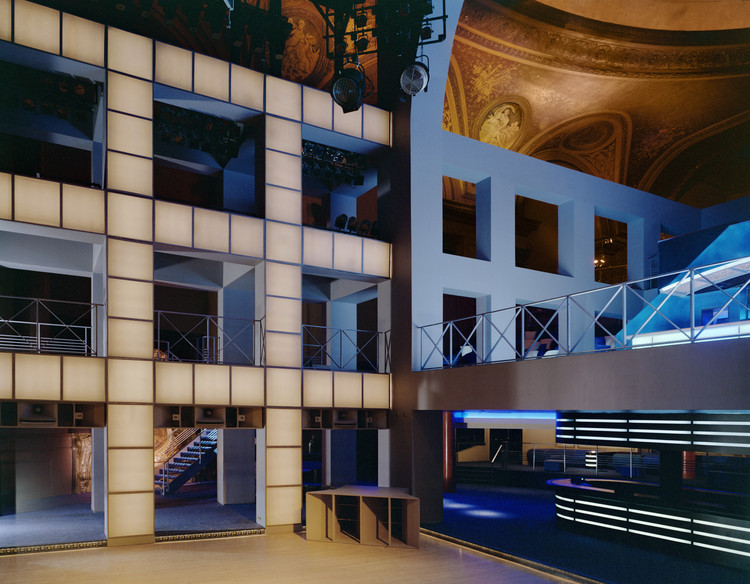
In May 1985, an old theater and concert hall opened its doors to the public for the opening of a brand new nightclub in New York City. Located on 126 East 14th Street, the project was commissioned by entrepreneurs Steve Rubell and Ian Schrager, owners of the also famous club Studio 54, and was conceived as a vibrant and luminous independent structure arranged inside a rather classic shell, which appears as a beautiful backdrop behind the clean geometry of Isozaki.
As The New York Times pointed out in its May 20, 1985 edition: 'Arata Isozaki is at once a great eminence of Japanese architecture and a source of some of its freshest thinking. And all sides of Mr. Isozaki are visible in the Palladium'.
The large orthogonal grid presented a certain thickness, in the form of illuminated and stacked boxes, framing the central dance floor and adapting a series of higher levels for the meeting and rest of the visitors. As a result of the refurbishment, the new and the old contrast dramatically, without losing their beauty and integrity, even enhancing their spatial and ornamental qualities to form a provocative and exciting whole. Among its varied corners, the space included incredible works by artists such as Jean-Michel Basquiat, Kenny Scharf, Keith Haring, and Francesco Clemente.
Unfortunately, the nightclub closed in 1997 and was later demolished, turning into a residence for students at the New York University.
'It is rare that a celebrated architect designs a discotheque at all, let alone decides to let this kind of project serve as his debut in a country in which he is beginning to achieve a major reputation. It is rather as if Philip Johnson were to go to Japan to design not a skyscraper, but a geisha house,' the newspaper added ironically, celebrating Isozaki's boldness in completing one of his first works in the USA.
Photographer Timothy Hursley has shared with us an impressive set of images from The Palladium, showing not only the spectacularity of its architecture but also its success as a space for dancing and the entertainment of New Yorkers in the 80s and 90s.













Reference
Paul Goldenberg. (May 20, 1985). The Palladium: An Architecturally Dramatic New Discotheque. March, 2019, The New York Times: https://www.nytimes.com/1985/05/20/nyregion/an-appraisal-the-palladium-an-architecturally-dramatic-new-discotheque.html






